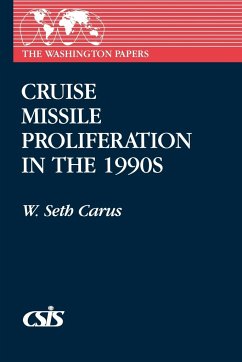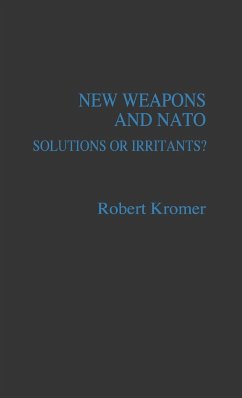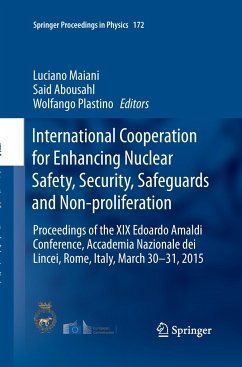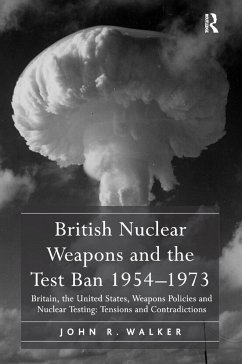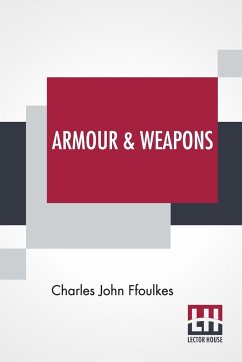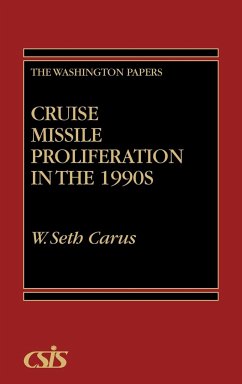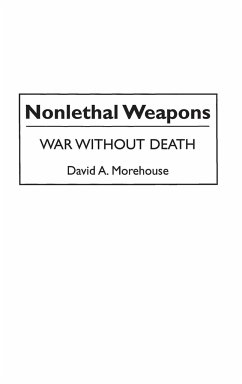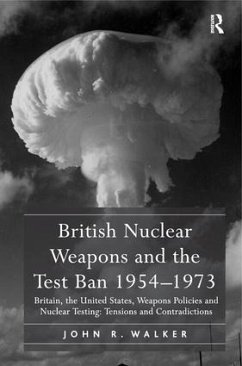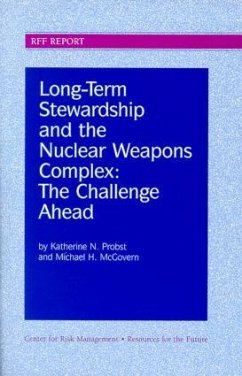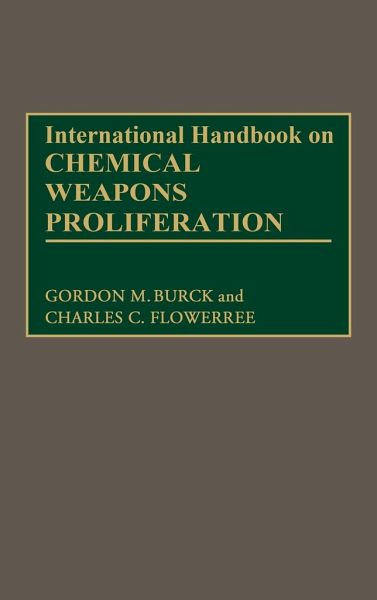
International Handbook on Chemical Weapons Proliferation
Versandkostenfrei!
Versandfertig in 1-2 Wochen
79,99 €
inkl. MwSt.

PAYBACK Punkte
40 °P sammeln!
This copiously documented examination of the problem of the spread of chemical warfare capabilities includes a military analysis of chemical use in the Iran-Iraq War, a survey of 39 countries suspected of having or seeking chemical warfare capabilities, and an analysis of the relevant political factors. With the concern over possible chemical warfare by Iraq in the Persian Gulf War, this handbook is especially timely. Also reviewed in other sections are chemical warfare agent production technology and the conversion of civilian production, long-range missile use, and various efforts to stem ch...
This copiously documented examination of the problem of the spread of chemical warfare capabilities includes a military analysis of chemical use in the Iran-Iraq War, a survey of 39 countries suspected of having or seeking chemical warfare capabilities, and an analysis of the relevant political factors. With the concern over possible chemical warfare by Iraq in the Persian Gulf War, this handbook is especially timely. Also reviewed in other sections are chemical warfare agent production technology and the conversion of civilian production, long-range missile use, and various efforts to stem chemical warfare proliferation. The spread of the poor man's nuclear weapon, as chemical weapons are termed, is given its first detailed examination in this unique handbook. Gordon M. Burck and Charles C. Flowerree systematically sift through the literature on each of 39 countries outside Europe and North America suspected of having or seeking chemical warfare capabilities. In each instance, conclusions are drawn as to the credibility of the reports and the nature of the CW capability that each country possesses. A full chapter looks at the use of chemical weapons in the Iran-Iraq War, especially timely in light of Iraq's CW capability in the 1991 Persian Gulf war. Other sections provide background information on chemical weapons manufacturing, amounts needed for militarily significant capability, and the possibility of delivering CW agents by long-range delivery systems. The editors' analysis of past and current efforts to stem CW proliferation, including political measures, export controls, and arms control negotiations, leads them to conclude that the only effective means of arresting chemical weapons proliferation would be a verifiable multi-lateral convention banning the possession and manufacture of chemical weapons. The book begins with an overview of the study's objectives and findings and the elements that comprise a chemical warfare capability. Part I starts with an analysis of the available data on Iraq that provides a useful model against which to compare information on other countries. The country reviews found in Part II are grouped by regions beginning with the Middle East and neighboring North Africa, the region of greatest concern. Part III deals with the suitability of long-range delivery systems for chemical warfare and measures undertaken or contemplated for arresting the spread of chemical weapons. Appendices include information on the technology of producing CW agents and the text of The Geneva Protocol. The text is complemented by maps and tables and concludes with a bibliography and index. The volume's copiously documented findings provide a solid basis for future assessments of the proliferation problem and establish International Handbook on Chemical Weapons Proliferation as a major reference work for university libraries, research institutions, the media, and government officials. It will also serve as excellent background reading for courses dealing with international security issues.





